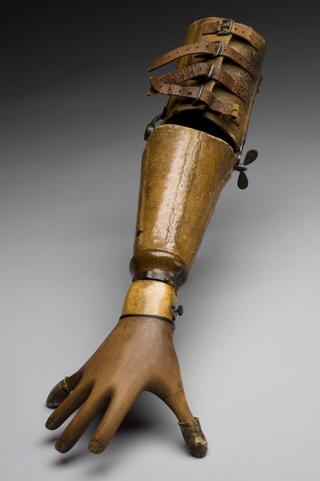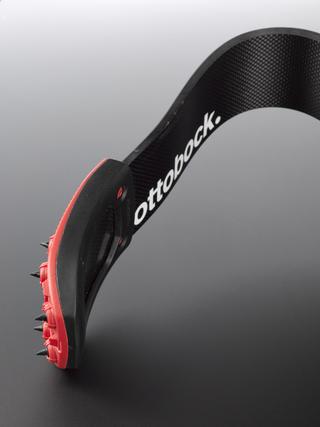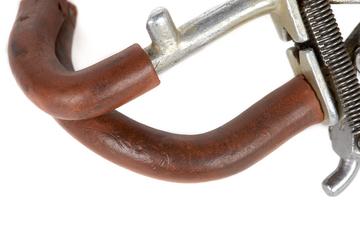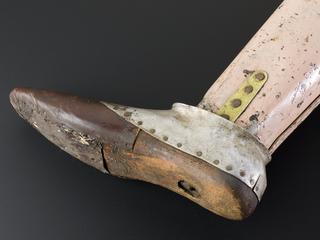








Ceramic infant doll, with cloth hat, wearing a right arm abduction splint and seated in model wooden chair, probably used to demonstrate to child patients a convalescent stage in their prospective orthopaedic treatment, with a descriptive label, from the Lord Mayor Treloar Orthopaedic Hospital, Alton, Hampshire, England, 1930-1950
Lying on a bed, the ceramic doll has a splint applied to its arm. Splints help keep injured or diseased bones in position so they heal correctly. The doll comes from the Lord Mayor Treloar Orthopaedic Hospital, Alton, Hampshire, England, and was used to show child patients and their family the upcoming treatment .
Opened in 1908, the hospital originally specialised in treating children with orthopaedic conditions caused by tuberculosis and polio. It combined treatment of the physically disabled with education and schooling for long term patients. The hospital closed in the 1990s.
Details
- Category:
- Orthopaedics
- Object Number:
- 2002-362
- Measurements:
-
: 225 x 120 x 205 mm
- type:
- teaching doll
- credit:
- North Hampshire Hospitals NHS Trust




